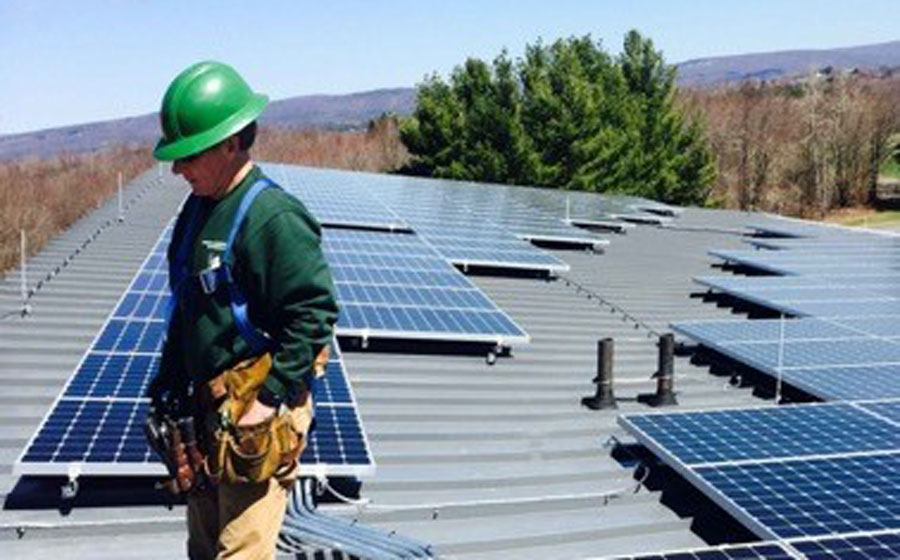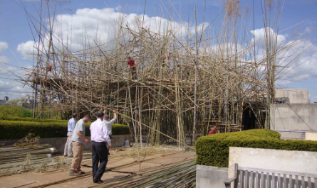I’m looking for information
Where do I need lightning protection? What are the risks? How do I specify it?
ECLE has moved! Our new address is: 187 Commercial Blvd, Torrington, CT 06790
Your browser is out of date.
You are currently using Internet Explorer 7/8/9, which is not supported by our site. For the best experience, please use one of the latest browsers.
A lightning strike to an unprotected structure can be catastrophic. A single bolt of lightning can carry over 30 million volts of electricity. Lightning can rip through roofs, explode brick and concrete and ignite fires. In addition to causing structural damage, a bolt of lightning can wreak havoc with computers, electronic equipment, and appliances. Every year in the United States, the number of homes struck by lightning increases. According to the Insurance Information Institute, residential lightning losses exceed a billion dollars annually and represent close to five percent of all residential insurance claims.
*Source Factory Mutual Insurance Co.
Any structure is a good candidate for lightning protection. All buildings have some level of vulnerability to lightning damage. The NFPA 780 Simplified Risk Assessment guide is a useful tool in evaluating a structure’s vulnerability to lightning damage. A structure's use and contents are as much a consideration as are the location and construction when determining lightning risk.
It is commonplace for lightning protection systems to be installed on schools, hospitals, health care facilities, airports, shopping centers, office buildings, manufacturing facilities, etc. In some parts of the country, there has been a move to mandate the installation of lightning protection on certain types of buildings. For example, in Florida, lightning protection systems are required for installation in schools and health care facilities. Correctional facilities are also required to have lightning protection systems.
In most cases, unless you are looking for the lightning rods you can’t notice them. Lightning rods are just 12 inches tall and 3/8 inches in diameter. That’s not much bigger than a pencil. Placed on a roof that is 30 –50 feet high and 18 inches in from the roof edge, the rods are barely visible from ground.
There are a number of measures that can be taken to make lightning protection even less noticeable. There are different materials that can be chosen to blend with the architectural features, style and materials. For instance, tin-plated copper can be chosen to blend with gray stonework or copper blends well with dark materials.
When designed during construction, all of the lightning protection system except the rooftop terminals, can be concealed and run inside the structure. There are also ways to avoid the use of air terminals, such as substituting thick-walled metal railings for the lightning rods. Decorative finials can also be used as air terminals, making the lightning protection an architectural accent.
Cost varies greatly depending on the location of the structure, its size, its construction, the complexity of the roofline, and the ground conditions. Lightning protection installation costs are lower when the system is designed and installed during construction. Retrofitting a system is very common, but tends to be slightly more expensive. In comparison with other building systems, such as security or plumbing, lightning protection is usually less costly.
Yes. The NFPA has maintained a standard for lightning protection for over 100 years. The standard is continually updated and edited to incorporate new findings. For example, in the last few years, sharp-tipped lightning rods have been replaced by blunt or round-tipped rods in NFPA requirements. This is the result of field research at New Mexico Tech which proved that blunt tipped rods are more successful at capturing a lightning discharge than a sharp tipped rod. The NFPA’s standard is based on the same practices and principles employed in recognized standards for lightning protection all over the world.
The FAA, NASA, Dept of Energy, and DoD typically do not build any structures without lightning protection systems. In fact, there was a federal report issued in 2004 that reviewed the technical validity of lightning protection and concluded that lightning protection systems are critical to protecting our national infrastructure. The American Meteorological Society issued a similar paper in early 2003.
Additional resources and education for architects, engineers, home owners, commercial building owners, and contractors.
The powerful energy in lightning must be able to move quickly and safely through a building. Under storm conditions, electrical charges build on all parts of the building. When a lightning event occurs, the current travels on every available pathway through the building. Isolating the charge is impossible, which is why lightning protection systems must provide multiple paths to the ground. In addition, all grounding systems must be interconnected and bonds to grounded metal objects and equipment are essential. These interconnections serve to equalize the electrical potential throughout the structure and thereby prevent arcing or side-flashing within the building.

A co-location data center like this CyrusOne facility in Houston, TX can’t afford downtime due to lightning. The rooftop air terminals (lightning rods) do not distract from the aesthetics of the building and are located where they can intercept lightning strikes and then safely route the power through conductors into the ground. Rooftop cooling equipment and architectural features such as the vaulted skylight are also included in the lightning protection system. Photo: Hicks Lightning Protection
Learn more about Lightning Protection for data centers
This travel center is equipped with a comprehensive lightning protection system; the goal is to create a low-resistance path that allows lightning to safely pass from sky to ground without damaging the structures or equipment. The system was designed and installed according to nationally recognized standards by Storm Shield Lightning Rod Company.
Learn more about Lightning Protection for Gas Stations
The large footprint of a megachurch like the First Baptist Church of Dallas increases the risk of a lightning strike. Religious buildings often serve double duty as places of refuge during emergency situations. Lightning protection systems help ensure these important facilities remain safe and in full operation during such times. Credit: Hicks Lightning Protection
Learn more about Lightning Protection for Religious Buildings
A lightning protection system protects this Amherst, MA school’s photovoltaic collectors as well as the building and its occupants. Like alternative energy systems, lightning protection is a forward-looking step towards building sustainability and resilience. Photo: Smokestack Lightning, Inc.
Learn more about Lightning Protection for Education Buildings
A unique temporary lightning protection system was designed and installed by Associated Lightning Rod Company for this special rooftop art exhibition atop the Museum of Modern Art in New York City. (Photo: Doug and Mike Starn)
Learn more about Lightning Protection for Occupied Roofs
visit www.sls-us.com to learn about their suite of lightning solutions for special applications